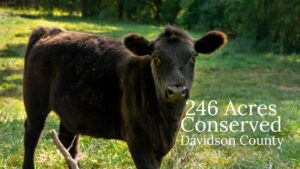
By Crystal Cockman
August 3,2016

When the trap closes, finger-like projections keep larger insects inside. Smaller insects are allowed to escape, because it would take more energy to digest them than the energy obtained from them. When triggered, the lobes snap shut within 1/10th of a second. If it is a larger prey that continues to activate the hairs, the lobes will close to an airtight seal and the plant secretes digestive juices to digest the prey.
The mechanism of trapping is not well understood. Flytraps do not have a nervous system. The acid growth theory suggests that cells in the outer area of the lobes rapidly move Hydrogen ions into their cell walls, lowering pH and allowing them to swell rapidly by osmosis, while at the same time cells in the inner layer move other ions allowing water to move out and cells to collapse.
There is another plant that is an aquatic version of the Venus flytrap, known as the waterwheel plant (Aldrovanda vesiculosa). They capture aquatic invertebrates similar to the way Venus flytraps capture bugs. They are a rootless aquatic plant with floating stems, and the traps grow in whorls around the central stem. There are only 50 populations of them known worldwide, in Europe, Africa, Asia and Australia, and they are also the most widely distributed carnivorous plant. However, they have become increasingly rare, and have become extinct in a large number of countries.
Venus flytraps are also a species in decline, and are threatened by poaching. In 2014, Governor Pat McCrory signed a law making it a felony to poach Venus flytraps from the wild. Early last year, Paul Simmons, Jr. and three accomplices poached 970 Venus flytraps from the Holly Shelter Game Land in eastern North Carolina. Just last week, Simmons was found guilty of the charge and sentenced to 6 to 17 months in prison. Two of the accomplices received probation and the third is awaiting trial. Before it was a felony, digging up flytraps in the wild was a misdemeanor with a fine of $50. The bill that made it a felony raised the penalty to up to 25 months in prison.